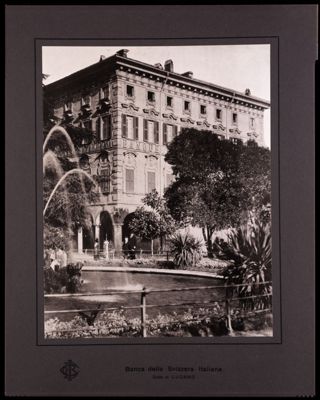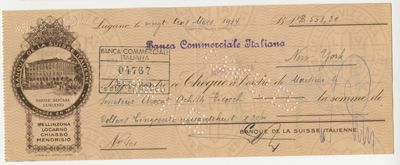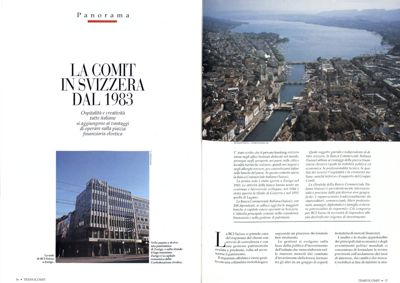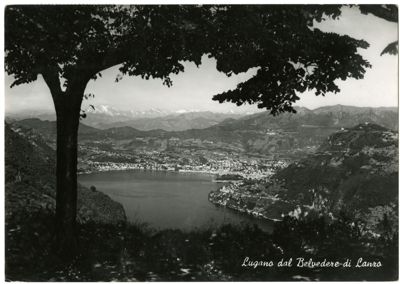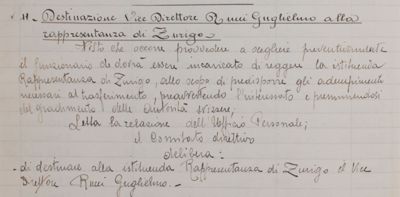| description |
TIMELINE
1910: Stake in Banca della Svizzera Italiana (BSI) acquired by Banca Commerciale Italiana (BCI).
1947: Banco di Napoli representative office opened in Zurich.
1953: Stake in Handelsfinanz Bank acquired by BCI.
1954: Istituto Mobiliare Italiano (IMI) representative office opened in Zurich.
1960: Istituto Bancario San Paolo (IBSP) representative office opened in Zurich.
1960: Stake in Banca del Gottardo SA acquired by Banco Ambrosiano.
1983: Banca Commerciale Italiana (Suisse), BCI subsidiary, founded.
1990: Stake in Rüegg Bank acquired by IBSP.
Relations between Italy and Switzerland intensified with the opening of the Gotthard railway tunnel in 1882. The Lombardy region did a great deal of business with the Switzerland's southernmost canton, Canton Ticino; Italy also endeavored to further develop trade with Central Europe, especially Germany.
In 1910, following the example of German and French banks, Banca Commerciale Italiana (BCI) acquired a stake in Banca della Svizzera Italiana (BSI), which had been founded in 1873, in order to find a solution to the problem of stamp duties on foreign securities.
BSI's objective was to give impetus to entrepreneurial initiatives and large public works projects, which is what led it to take part in several of BCI's industrial credit operations, from the Unione Italiana Concimi, a large producer of phosphate-based fertilizers, to the Montecatini - Società Generale per l'Industria Mineraria e Chimica.
BCI kept substantial deposits in BSI throughout the 1920s, drawing upon them as needed. Indeed, the Swiss bank was one of BCI's most important capital-supplying banks, alongside BCI's London and New York branches, Banca Commerciale Italiana France (ComitFrance) and Banca Commerciale Italiana per l'Egitto (Comitegit). BSI had seen a huge increase in its funds due to a period of massive growth for Swiss banks in general, which - thanks to the country's policy of neutrality, the stability of the Swiss franc and its bank secrecy - began transforming Switzerland into one of the world's leading financial centers after World War I.
Starting in 1936, following Italy's conquest of Ethiopia and the imposition of sanctions against Italy, Switzerland began to play a special role vis-à-vis the Italian banking system, in part substituting that of France and Great Britain. It was against this backdrop, towards the end of World War II, that Banco di Napoli, too, turned its attention to Switzerland, opening a representative office in Zurich in 1947 with the aim of bolstering Southern Italy's economy through interaction with countries beyond the Alps.
In 1954 Istituto Mobiliare Italiano (IMI) decided to set up premises in Zurich to help Italian companies which - albeit in a somewhat chaotic and disorganized manner - had turned to the Swiss market for financial support. Indeed, IMI itself had begun to focus on foreign markets with greater capital availability; of these, the Swiss market had historic links to Italy that IMI hoped to nurture.
A few years later, in 1960, Istituto Bancario San Paolo (IBSP) also opened a representative office in Zurich, its second international office. In that same year Banco Ambrosiano acquired a stake in Banca del Gottardo SA, a Swiss bank headquartered in Lugano.
In 1983, after having transferred its stake in BSI and part of its stake in Handelsfinanz Bank (which it had acquired in 1953), BCI decided to create its own subsidiary in Zurich: Banca Commerciale Italiana (Suisse), which set up a branch in Geneva in 1986 and in Lugano in 1992. The bank was one of the leading foreign-owned banks in Switzerland, with a primary focus on private banking and financial consulting.
In 1990 IBSP strengthened its position in the country by acquiring a stake in Rüegg Bank, a member of the Hambros Group.
It is important to note how the operations and ties of Italian banks with Switzerland developed over time thanks in part to institutions such as Banco Lariano which, with its strong roots in the Como area, extended its sphere of influence beyond the Swiss border in an attempt to foster commercial and financial relationships, especially vis-à-vis the silk industry. |
